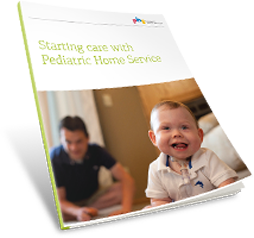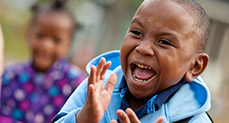Address bullying of children with disabilities through communication and education
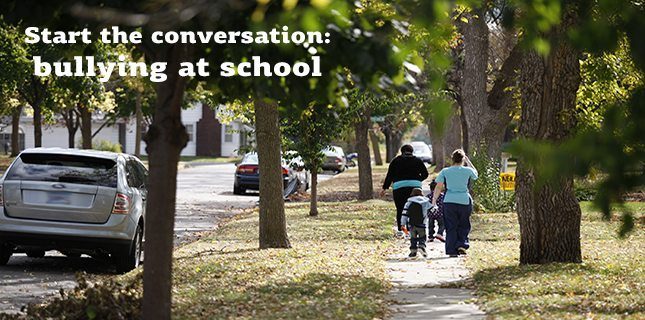
School is back in session and as classmates gather under one roof, there’s a feeling of excitement and jitters in the air. Whether students are excited to move up a grade in school, feeling anxious about a certain subject, or are ready to be reunited with peers, there’s a lot ahead in these upcoming months.
For the parent of a child heading to school – particularly one who has special medical or learning needs – the same excitement and anxieties often arise for their own reasons. Will their new school be too hard to navigate with a wheelchair or equipment? Will they keep up in the new mainstream class they’ve been placed in? And all too often wondering, will they be accepted and respected by their peers?
Bullying, in its many forms, is an especially pervasive issue that leaves a lasting impact – and unfortunately, children with disabilities are two to three times more likely to be bullied than other students. Thankfully with the right resources and tools, bullying can be addressed and prevented in schools.
Bullying comes in many forms
Bullying doesn’t only mean rude words are said or physical injury occurs – a number of behaviors are considered bullying (and harassment) by the Department of Justice (DOJ) and Office of Civil Rights (OCR). Behaviors may include:
- unwelcome conduct such as verbal abuse, name calling, epithets, or slurs
- graphic or written statements
- threats
- physical assault
- other conduct that may be physically threatening, harmful, or humiliating
And bullying doesn’t only happen in person. If a child is being bullied online, it’s considered cyberbullying and is a growing issue with the presence of social media available to students today. However, steps can be taken to reduce the likelihood of bullying and help educate children on being inclusive and accepting of one another.
Conversation can go a long way
When Cassidy learned last spring that her son Triston (who is legally blind and autistic) was the victim of cyberbullying after a photo of him in the bathroom was posted on social media, she was devastated.
“To send him to school where he should have the opportunity to learn and then see him violated – to realize you can’t always protect your child – it was terrible,” remembers Cassidy. “I don’t want this to happen to my son, or anyone else, again. So I’m trying to educate people.”
She has since become an advocate in the fight against bullying – using her voice to represent kids who may have experienced it or are especially susceptible, and praising Triston’s classmates who stood up to the student who posted the photo.
“I’ve been emphasizing the message that if you see bullying in any form happening, even if you don’t have the courage to stand up to the bully, you need to go tell an adult, a teacher, or your principal right away,” said Cassidy. “The more I shared our story, the more I felt like a slow but positive change is happening – because families are sitting down with their kids to talk about bullying and how hurtful it is.”
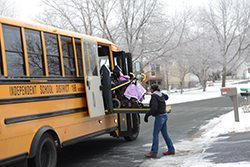 Monica Handlos, clinical social worker at Pediatric Home Service, agrees with the importance of making sure students know that if they see something mean happening, they should tell an adult. She also encourages parents to do a daily check in with their children.
Monica Handlos, clinical social worker at Pediatric Home Service, agrees with the importance of making sure students know that if they see something mean happening, they should tell an adult. She also encourages parents to do a daily check in with their children.
“By having these conversations, you can ask them what made them happy and if anything made them sad at school, or if somebody did something nice for them, and so on,” says Monica. “It will become a normal part of the routine, and you may be able to sense if there are any concerns to be aware of. It lets you hear the best parts of their day at the same time.”
Creating goals within an IEP
Many parents of children with complex needs are familiar with Individual Educational Program (IEP) documents to layout their child’s learning needs, how the school will be involved in providing services, and measuring progress.
IEPs are traditionally focused on only the child’s educational needs, but Beth-Ann Bloom – a genetic counselor with the Minnesota Department of Health and mother to a son with brittle bone disease – thinks this document is an opportunity to also consider a hidden curriculum present in schools, and encourages parents to bring it up at their meeting with school staff.
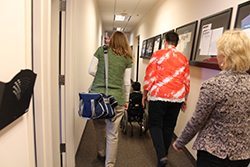 “Just like a child can’t tell the difference between a ‘B’ and a ‘D’ when they’re dyslexic, some children with special needs don’t recognize social cues or unspoken rules,” said Beth-Ann. “By including a discussion in each IEP conference about what may make this child more likely to be bullied or how the school can encourage inclusion between the students and their peers, there’s a proactive step being taken to reduce situations where bullying might occur.”
“Just like a child can’t tell the difference between a ‘B’ and a ‘D’ when they’re dyslexic, some children with special needs don’t recognize social cues or unspoken rules,” said Beth-Ann. “By including a discussion in each IEP conference about what may make this child more likely to be bullied or how the school can encourage inclusion between the students and their peers, there’s a proactive step being taken to reduce situations where bullying might occur.”
Similarly to how an IEP may recommend which math class a student takes, goals can be set for a student to improve their social interaction by eating lunch with their peers two days a week, or joining a club. This not only helps the child learn to socialize or respond to certain situations, but also teaches their classmates to build relationships with students who might have medical equipment, home care nurses, or other special needs – building a community of understanding and inclusion.
There are resources for you
Bullying in schools should be taken very seriously by school administration, parents, and students alike. By teaching children from a young age that it is unacceptable to treat anyone poorly regardless of how they look or act and that it is important to tell an adult if someone is being bullied, our schools can be safe spaces for learning.
PACER Center has built a strong anti-bullying program that provides an in-depth level of information catered specifically to a population – whether that’s children, teens, or adults.
Thanks to these resources, bullying can become a topic appropriate for any age – because the sooner the message of inclusion and respect is reinforced for a child, the better.
Have you talked about bullying with your kids or the school? We’d love to hear about your experiences!
Originally published: September 2, 2016